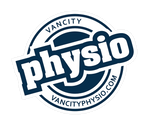A groin strain occurs when the muscles in the inner thigh are stretched or torn, often due to sudden movements, overuse, or inadequate warm-up. Physiotherapy plays a crucial role in the rehabilitation process, helping individuals regain strength, flexibility, and function. Here's a general outline of the physiotherapy approach for groin strain rehab:
Assessment and Diagnosis:
The first step involves a thorough assessment by a physiotherapist to determine the severity of the groin strain and identify any associated issues.
The physiotherapist may use various tests and measures to assess muscle strength, flexibility, joint range of motion, and functional movement patterns.
Pain Management:
Initially, the focus is on pain management through techniques such as ice therapy, gentle massage, and possibly the use of supportive devices like compression wraps.
Modalities like ultrasound or electrical stimulation may be employed to alleviate pain and reduce inflammation around groin area.
Restoration of Range of Motion:
Controlled, progressive stretching exercises are introduced to restore normal range of motion in the hip and groin muscles.
Passive stretching may be initially employed, followed by active and restrictive exercises as tolerated.
Strengthening Exercises:
Specific exercises are prescribed to target the muscles of the groin, hip, and core.
Initially, these exercises focus on low resistance and high repetitions to build endurance. As the patient progresses, resistance is increased to improve strength.
Core Stability Training:
Strengthening the core muscles is crucial for providing stability to the pelvis and reducing strain on the groin muscles.
Exercises may include planks, bridges, and specific abdominal exercises tailored to the individual's needs.
Functional Rehabilitation:
Functional exercises are introduced to mimic activities relevant to the individual's daily life or sport.
This may involve sport-specific drills, agility exercises, and balance training to ensure a safe return to activity.
Proprioception and Balance Training:
Proprioception exercises help improve awareness and control of the body's position in space, reducing the risk of re-injury to your groin.
Balance training may involve exercises on unstable surfaces or dynamic movements to challenge stability.
Gradual Return to Activity:
The physiotherapist guides the patient through a gradual return to normal activities or sports, ensuring that the injured area can handle the demands placed on it.
Education and Prevention:
Patients are educated on proper warm-up techniques, body mechanics, and lifestyle modifications to prevent future groin strains.
The importance of ongoing strength and flexibility exercises is emphasized for long-term injury prevention.
Monitoring and Adjustments:
Throughout the rehabilitation process, the physiotherapist continually monitors progress and adjusts the treatment plan as needed.
Remember, individualized care is crucial in groin strain rehabilitation. Physiotherapy programs should be tailored to the specific needs and goals of each patient, taking into account factors such as age, fitness level, and the nature of the injury. Always consult with a healthcare professional for personalized advice and treatment.
Book an appointment today with Vancity Physio!


